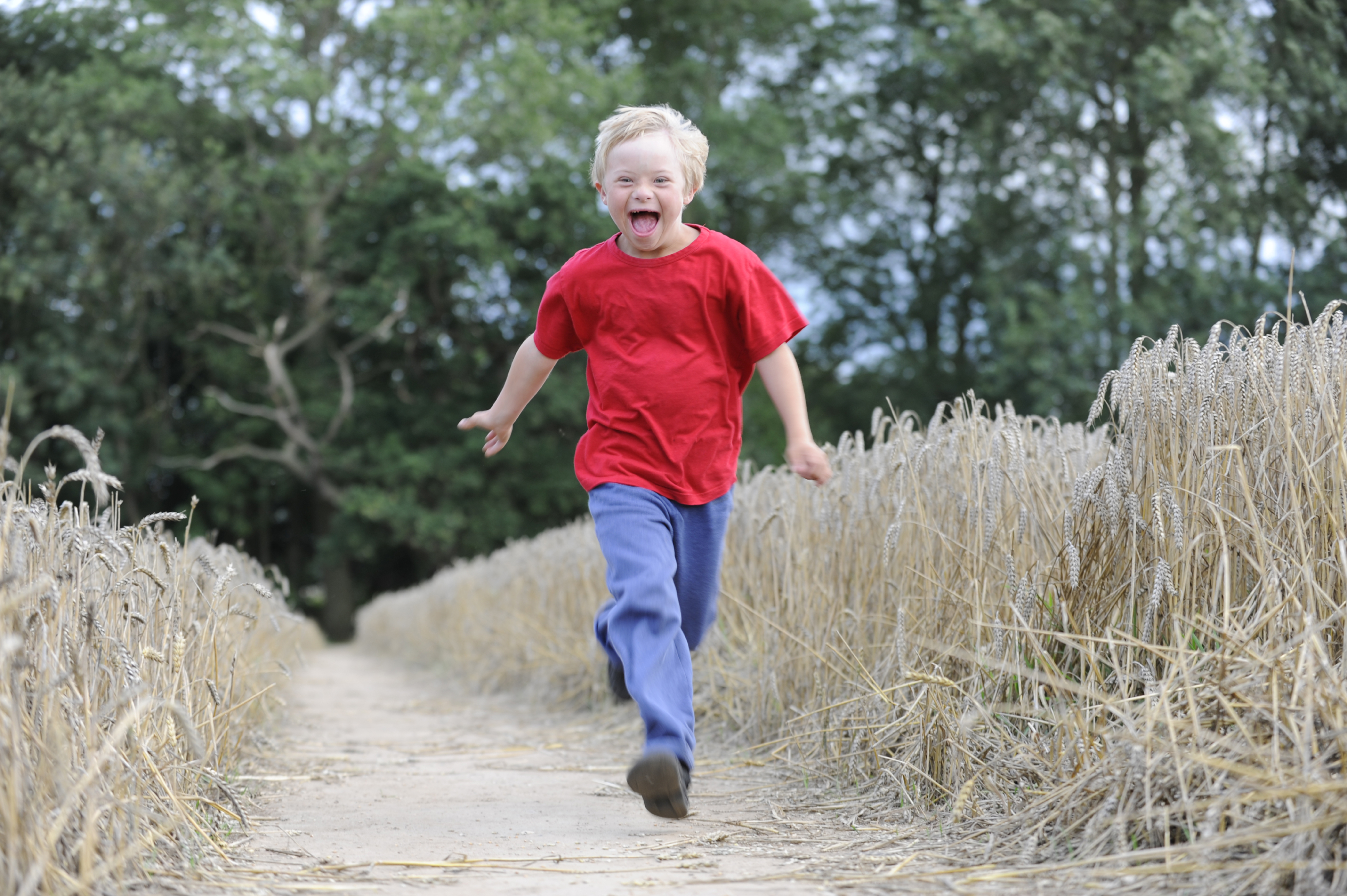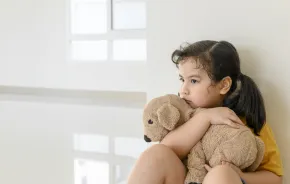
On a warm fall day in Seattle, I got to see 9-year-old Miemie Jefferson taste freedom. Riding a side-by-side tandem bike, she and her mom giggled and cheered as they felt the thrill of gaining speed on a hill, the wind blowing in their faces. As Miemie’s mom told me after their joy ride around the Seattle Children’s parking lot, for the Jeffersons this was a rare treat.
Miemie has Angelman Syndrome, a neuro-genetic disorder characterized by developmental delays, lack of speech as well as walking and balance disorders. Anneli Jefferson brought her daughter to an Outdoors for All (OFA) cycling demonstration event at Seattle Children’s to see if adaptive equipment might be an opportunity for their whole family. “We have sons who are 11 and 13, and this would give our family a chance to be together. We are always having to split up,” said Jefferson, a little winded after helping her daughter back to their minivan.
Strengthening family bonds
There’s the saying about how the family that plays together stays together. In our family our best memories are made on a ski slope or on a bike ride. But relationship-building between siblings or between parents and children is as important for families with kids who have special needs as it is for any other.
OFA is a Seattle-based nonprofit offering people the chance to explore activities such as skiing, kayaking, rock climbing and biking. Some kids may require adaptive equipment, which OFA rents out, similar to a parks and rec program. Program manager Dan Retailliau tells me that he encourages siblings and parents to be involved. A highlight from his summer was an OFA Family Camp when he helped get a dozen children who had never kayaked before get out on the water with family members. “One of the barriers is getting parents to believe that kids can do it,” Retailliau says.
“Something we’ve found over the years is that the mother’s love is unconditional, but as a general rule, the father’s is less so,” says John Borgognoni, vice president of sports and programs for Special Olympics Washington. “Some dads have difficulty with their child having an intellectual disability — they feel like they’ve lost that little league or pop warner football component. But once into our program they see that there’s the same enrichment as any little league program so that’s huge.”
Cathy Graubert, a physical therapy manager at Seattle Children’s, says safety is the first priority. But after that, families can start by simply thinking about sports they like the best. “If they can get out on ski trips where maybe the child uses poles with outriggers, or perhaps they are in a sit-ski, but where the typical kids are skiing too, then they can all have fun.”
Facilitating kids’ friendships
Just before his third birthday, Linda Heslop’s son Matt was diagnosed with autism. Over the years, he has played sports including baseball, floor hockey and soccer in Special Olympics and other leagues designed for children with special needs. Matt is now a high school senior in a suburb of Detroit, Mich.
Linda and I met a decade ago through our families. With her son’s graduation around the corner, she told me that she and her husband are gathering up photos and reflecting on what is important to their son. “I think Matt’s sports teams made him more social: He’s done outside events with many of these kids, birthday parties for instance. He’s gotten to know them.”
Heslop admits to feeling frustrated at times when she would drive long distances for soccer games only to have her son staring off into space. “I’d be like, ‘Are you paying attention?’ But he would have fun on the sidelines. Some of the others weren’t paying attention, and because Special Olympics levels its teams, it’s really about if the team wins or loses collectively.”
At the Special Olympics Washington’s Summer Games, Borgognoni says some 2,800 athletes participated, but the most popular event even for the kids was the dance held at Joint Base Lewis-McChord. “Here you have athletes who’ve been competing all day, swimmers, soccer players, powerlifters, cyclists … and the dance in the evening was still going strong at 11 p.m.” Borgognoni says he sees “astounding, life-changing experiences” when children go from being wallflowers to athletes who have blossomed.
Team sports, even those aimed at special-needs populations, are still not a fit for every child: Emotions can run high and children can upset each other. But that doesn’t mean that all activity should be tossed aside. A family can consider individual sports like biking, swimming, track, horseback riding or golf, where the child can participate with others while not under pressure to catch a ball or pass to someone under pressure.
Recognizing the physical benefits
The reality is that inactivity and obesity are bad for all kids. “Children with special needs need exercise too,” says Debra Glazer, a pediatric physical therapist in Seattle who, I can tell by her smile as she works with a boy in a wheelchair, truly enjoys getting kids active. Sports improve muscle strength, coordination, flexibility, as well as offer cardiovascular benefits — all reasons to find the right sports fit. “Just like with typical kids, not doing activity is bad for the same reasons. Our job is to get them out!” Glazer says.
Schools are required by federal law to provide physical education opportunities for all children. As mandated in the Individuals with Disabilities Education Act of 2004 children with special needs are entitled to participate in organized sports, physical education and recreational programs unless their presence puts them or someone else in danger.
Susie Carney, a physical therapist who contracts with the Highline School District, helps children who do not have the gross motor skills to jump, climb or slide. Parents can advocate for their children to make sure that physical activity is part of their Individual Education Programs/Plans (IEPs). “Even recess isn’t appropriate for all kids; they would be overstimulated,” Carney says. So she will work with families to encourage their kids to make small gains, for instance, jumping off small curbs or practicing walking down the stairs with alternating feet.
The common thread I hear from experienced families and experts alike is that parents should not approach sports and physical activity as something the child cannot do, but rather guide them toward participating in sports in which they can succeed. “If they’re successful, it’s fun. If not, they’ll move on to something else,” Graubert says.











